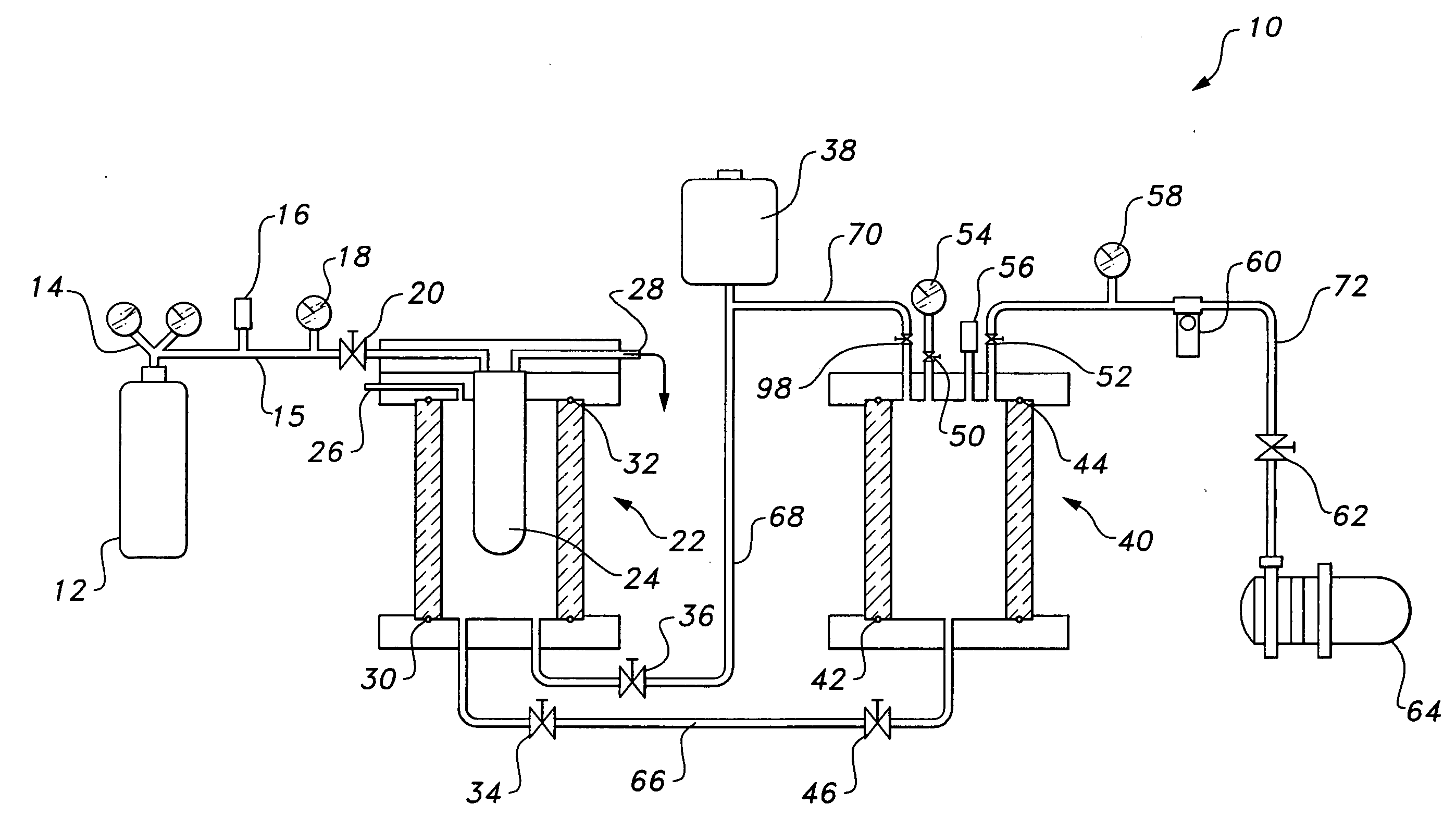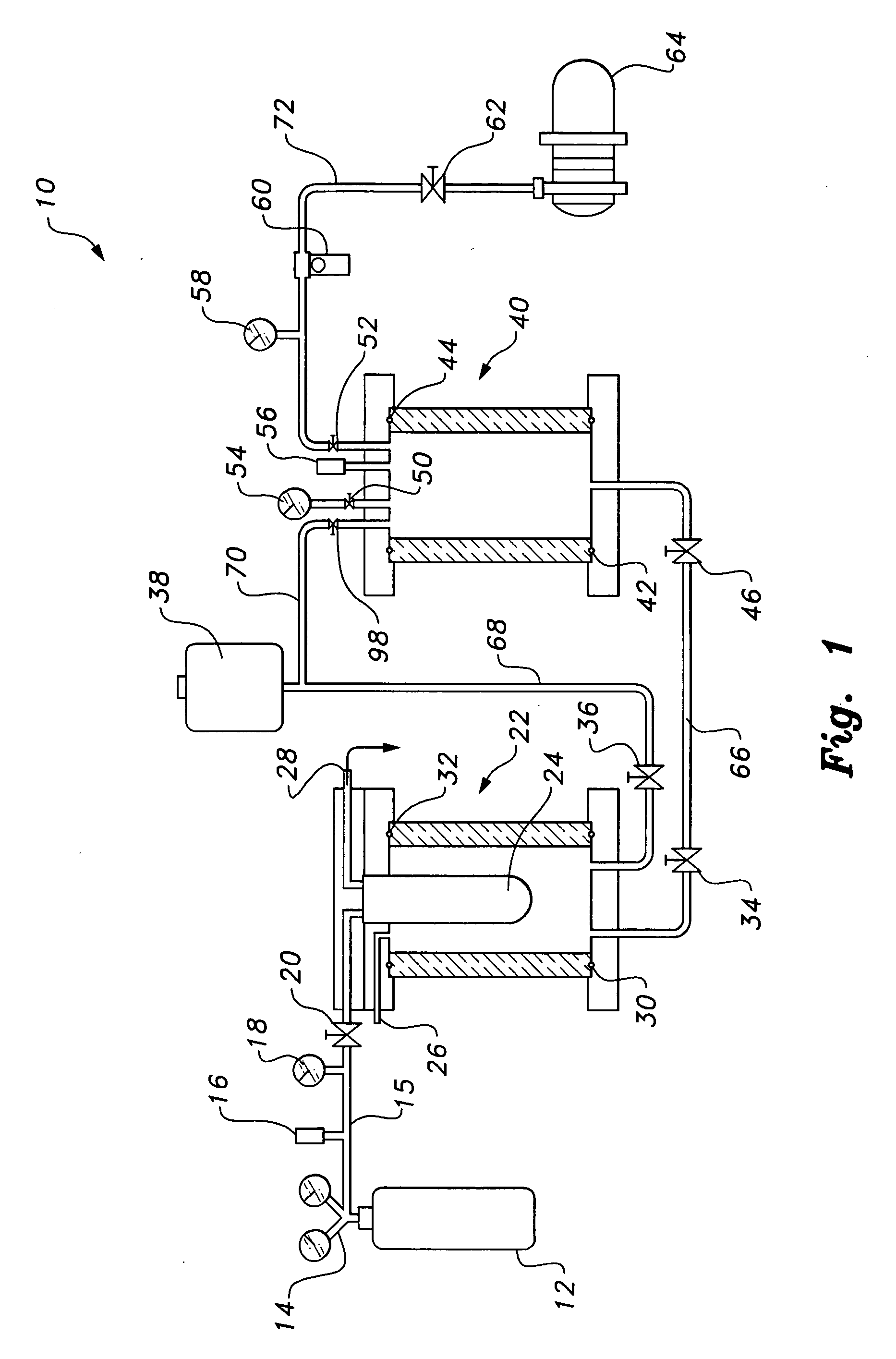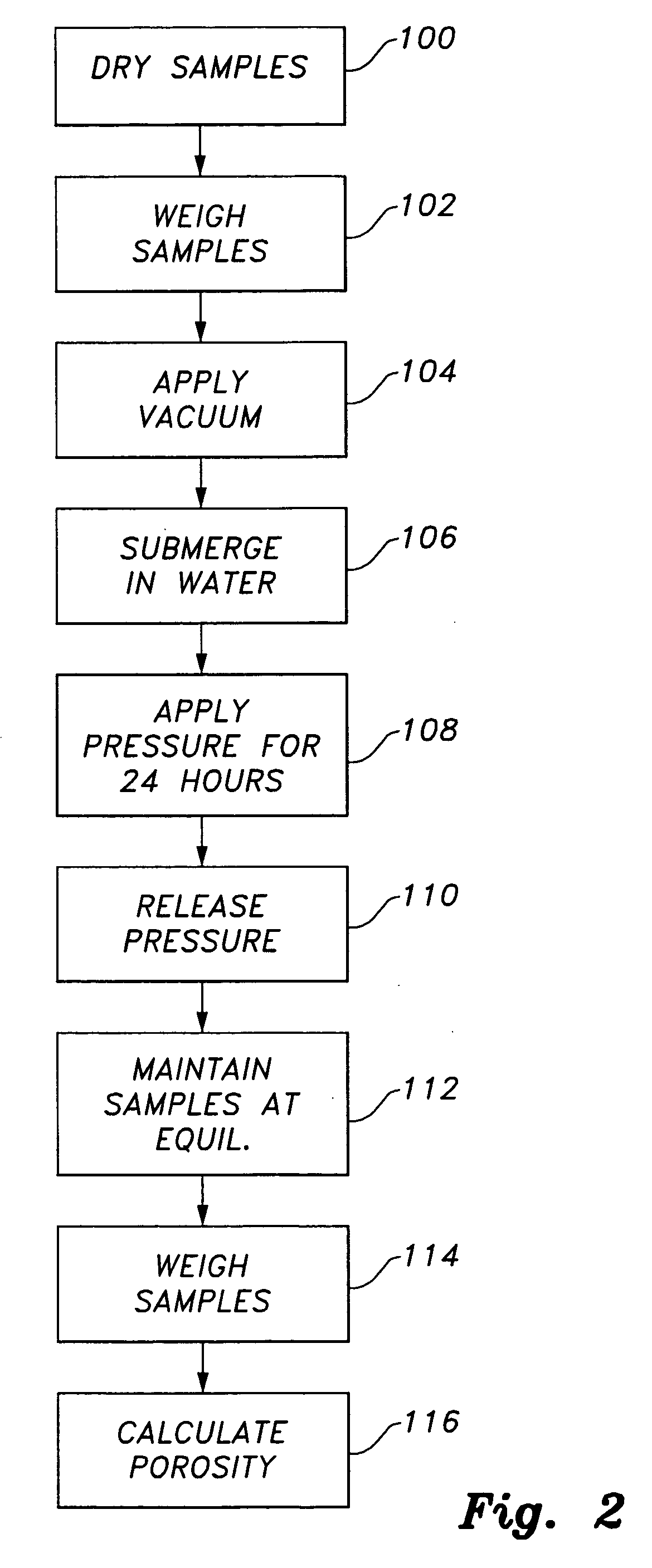System and method for measuring porosity of high strength and high performance concrete using a vacuum-pressure saturation method
a technology of porosity and vacuum pressure, applied in the field of material properties, can solve the problems of undesirable effects on the performance or service life of asphalt pavement or other structures, affecting the strength and durability of concrete structures, and unable to determine the saturated surface dry (ssd) weight of samples that include these types of materials, etc., and achieve the effect of increasing the water pressure within the vacuum pressure vessel
- Summary
- Abstract
- Description
- Claims
- Application Information
AI Technical Summary
Benefits of technology
Problems solved by technology
Method used
Image
Examples
Embodiment Construction
[0021]FIGS. 1 and 2 illustrate a system and method for measuring porosity of concrete. The method is a vacuum pressure saturation-based method for calculating a porosity value of a sample of concrete. As will be described in greater detail below, the system for performing the method primarily includes a pressure cell 22, a vacuum pressure vessel 40, a source of pressurized air 12, a source of water 38, and a vacuum pump 64.
[0022]The method begins with drying at least one concrete sample in an oven or the like (step 100 in FIG. 2) at approximately 105° C. The sample is then preferably cooled in a vacuum pressure vessel 40 for approximately twenty-four hours. Following cooling, a first weight measurement of the concrete sample is taken and recorded at step 102. Following weight measure, the sample is subjected to vacuum for approximately three to four hours (step 104) within the vacuum pressure vessel 40. As shown in FIG. 1, vacuum pressure vessel 40 is connected via vacuum line 72 to...
PUM
| Property | Measurement | Unit |
|---|---|---|
| pressure | aaaaa | aaaaa |
| pressure | aaaaa | aaaaa |
| height | aaaaa | aaaaa |
Abstract
Description
Claims
Application Information
 Login to View More
Login to View More - R&D
- Intellectual Property
- Life Sciences
- Materials
- Tech Scout
- Unparalleled Data Quality
- Higher Quality Content
- 60% Fewer Hallucinations
Browse by: Latest US Patents, China's latest patents, Technical Efficacy Thesaurus, Application Domain, Technology Topic, Popular Technical Reports.
© 2025 PatSnap. All rights reserved.Legal|Privacy policy|Modern Slavery Act Transparency Statement|Sitemap|About US| Contact US: help@patsnap.com



